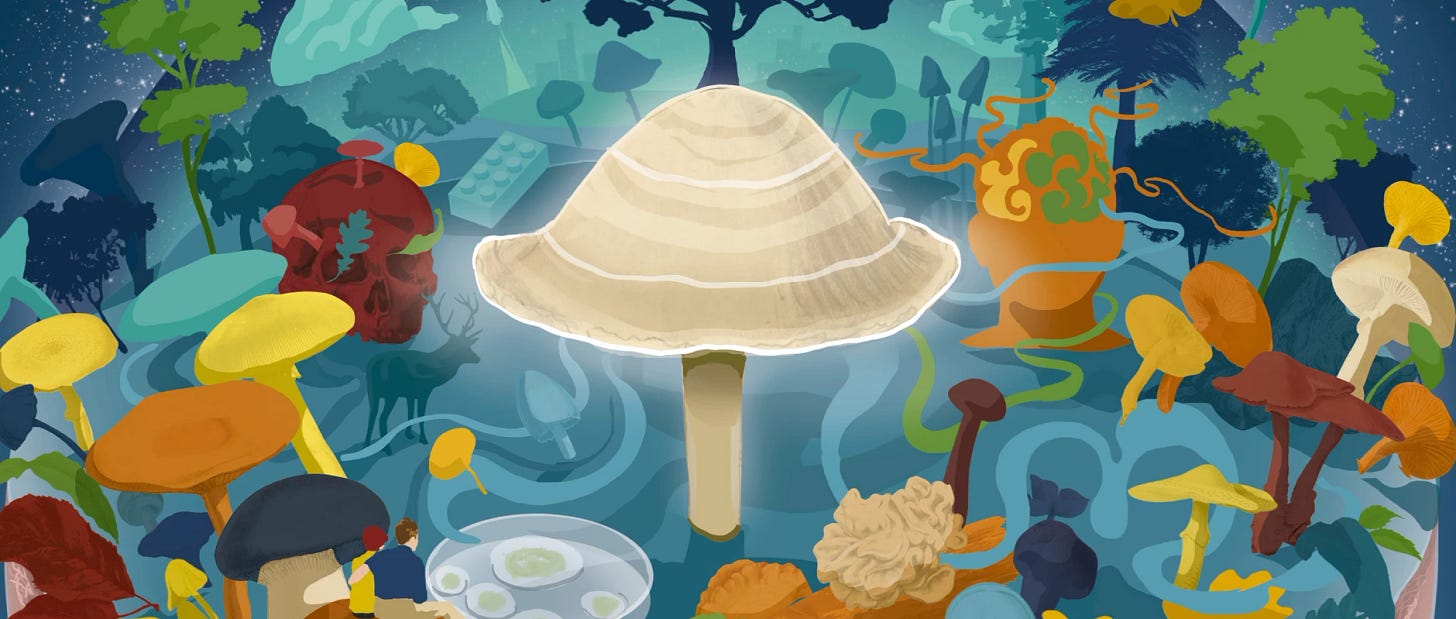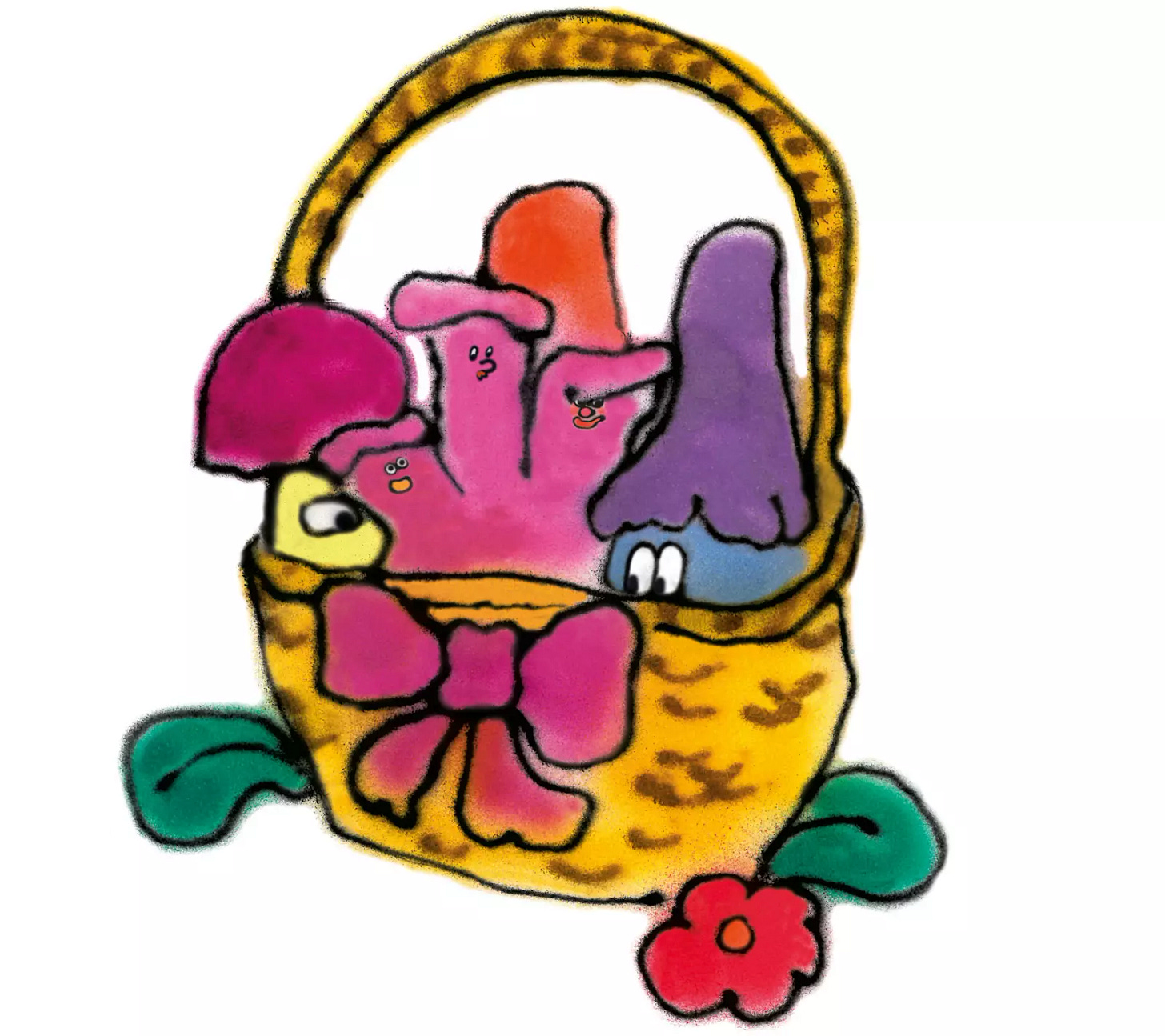Fungi Factoids, Culture and the Fight Against Climate Change
Fungi Fridays - January 20th, 2023 - Issue #65
Fungi Friday fam,
Welcome back! It’s that time of week again, you’ve officially made it to Friday! As for me, I’ve returned from my adventures abroad and am finally getting back into the full swing of planning for a successful 2023 growing season. We’ve FINALLY lined up the trailer move and from there it’ll be off to the races. March 1 is approaching quickly and there is plenty to do still beforehand.
Big things are in the works! Looking forward to once again taking you all on this journey with us. For now though, hope you all have a solid weekend. Let’s get into the weekly stories.
Fungi: Absolutely everything you need to know about these surprising lifeforms
As we get into feature number one this week, it’ll help to establish the question “What are fungi?”
Fungi are decomposing, fermenting, edible, toxic, carbon-sequestering, disease-causing, disease-curing, pollutant-busting, mind-bending, rain-generating, zombie-making marvels. They underpin almost all life on Earth, but are mostly situated underground and often overlooked.
When we think of fungi, mushrooms spring to mind, but these are just the small ‘above ground’ portion of the organism. Mushrooms are the fruiting body of the fungus, like the apples on a tree. Most of the fungus is hidden underground in the form of a branching network of tubular filaments called mycelium. If you took a teaspoon of healthy soil and lined up all the mycelium within it, it would stretch up to 10km.
There are an estimated 2.2-3.8 million different species of fungi, which come in all shapes and sizes. Fungi have a close relationship with the plant kingdom, in a sense that 90% of plants have some sort of fungi that they rely on. Fungi digest food through external enzymes by absorbing dissolved organic matter. They can reproduce sexually, asexually (without sex) and parasexually (where tiny filaments called hyphae fuse together).’
And while this first feature does go into more detail on specifics related to fungi, figure we’ll wrap this one up with 6 ways fungi affect our lives as humans:
6 ways that fungi affect our lives
Itaconic acid, derived from Aspergillus fungi, is used in a wide range of industries. Products include LEGO, plastic car parts, printing inks, UV coatings and synthetic rubber.
More than 200 species of fungi are thought to be hallucinogenic. Psilocybin, found in magic mushrooms, is being explored as a treatment for depression and anxiety.
Adidas has developed a pair of trainers made from mycelium, and Stella McCartney has premiered a ‘panelled bustier and utilitarian trouser set’ fashioned from the same fungal product.
Fungi can influence the weather. When their spores occur in clouds, they can seed raindrops and spur the formation of ice crystals, which can fall as snow, sleet or hail.
The global market for edible mushrooms is worth over $42bn per year. But out of the estimated 10,000 mushroom species found worldwide, only about 350 species are known to be edible.
Most fungi have cell walls made of chitin, which is a substance found in the exoskeletons of insects and the shells of crabs and lobsters.
Fundamental Fungi: Scientists say spore producers can mitigate climate change
Fungi are seen by many researchers as the threads that help stitch ecosystems together. They attach themselves to plant roots and diverge in all directions, indirectly connecting the most majestic trees with the tiniest sources of nitrogen and other elements needed to maintain life. Mycelia, the root-like structures of fungi, are the vessels through which this connection happens. And that is where we shall begin with feature number two.
From fighting off pests that harm plant life, to environmental restoration, to their ability to assist in helping trees, plants and other vegetation recover from catastrophic weather events, fungi are everywhere when it comes to protecting ecosystems all over Earth. The more organic matter present, the more fungi can help nature heal itself. Generally speaking, because that forested ecosystem with the high amount of leaf litter and organic matter that settles in that situation, we should expect to see fungi be a very large part of the recovery of that system due to the high initial populations and that will continually become more and more important as we attempt to take the challenge that is climate change.
THE SHROOM BOOM: HOW MUSHROOMS ARE TAKING OVER CULTURE
From food to fashion and whatever comes between, mycology — the study of fungi — seems to be popping up everywhere. Stella McCartney’s SS22 campaign was called “Fashion Fungi.”Brands are putting mushrooms on their clothes and, in some cases, making clothes from mushrooms. Joe Rogan hawks mushroom coffee, and The Weeknd sings about mushroom tea. Björk made a whole mushroom album. There’s a bevy of research into mushroom treatments, from the most basic wellness applications to potential cures for alcoholism and Alzheimer’s. By some estimates, the global mushroom market will be worth more than $115 billion by 2030.
Myco-mania may have taken off during lockdown, but the forces behind it go well beyond the pandemic. Mushrooms are sporing in the public consciousness because a host of factors have converged: technological breakthroughs, environmental crises, a psychedelic renaissance, and, above all, the strange, mysterious nature of mushrooms themselves. These weird little fungi resist our understanding yet inspire intense devotion. They may not just be the produce but the organism of our time, one with the capacity to change not only how we eat, but how we think and live.
Fungi are everywhere — they’re all around you and inside you. Some are microscopic, some cover entire forests. They decompose waste, create new life, and form symbiotic relationships with different lifeforms all over the planet, humans very much included. They’ve been around for at least 1 billion years, but the scientific community only recognized them as their own biological kingdom distinct from plants in the 1960s. For all they do on the planet, we know shockingly little about them and how they function. Only 6 to 8 percent of the fungal species in the world have been identified.
This feature is honestly quite long and ridiculously detailed, so if that’s of interest to you please check it out. That being said, I think the article sums it all up very well. Mushrooms are just really cool, and very alive. They’re springing up everywhere in the culture right now, and for good reason. Mushrooms have always had this really interesting cultural phenomenon around them. It’s a mix of psychedelics and hippie fun, but it’s grown beyond that into medicine and biomaterials and all these things. When you’re working with fungi, you really get this sense that you’re working with another lifeform. You get to observe another living thing, arguably one of the oldest species on Earth.
Want even more? Here are some other interesting, mushroom focused reads of the week:
I MICRODOSED MAGIC MUSHROOMS FOR A YEAR: HERE’S WHAT HAPPENED
PSILOCYBIN PRE-WORKOUT STACKS: CAN MUSHROOMS IMPROVE YOUR URGE TO MOVE?
American startup uses mushroom to produce sustainable leather
As always, thank you for reading this weeks edition of Fungi Friday’s! We are especially thankful for all of you who spend your Friday lunch with us, learning about all things Fungi. If you enjoyed what you found, please feel free to forward to friends also interested in the Fungi Community!
And if you were forwarded this post and enjoyed what you found, please subscribe below:




Everything? The more I learn about mushrooms, the more I realize I know nearly nothing about mushrooms.